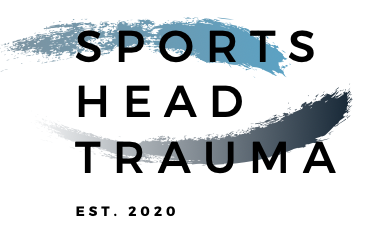Los Angeles Charger’s tight end Donald Parham’s injury in the first quarter of the football game against the Kansas City Chiefs left a lot of fans shocked and confused about what they had just witnessed. Parham, who appeared to be unconscious, was carried off the field on a stretcher after hitting his head on the ground while trying to catch a pass. Immediately after hitting his head on the ground, his arms locked up in what researchers call a fencing response. As he was carried off on a stretcher his arms seemed to be shaking involuntarily. This frightening incident highlights the seriousness of traumatic brain injuries and the risks associated with playing sports like football.
What is the Fencing Response?
According to a paper published in Medicine & Science in Sports & Exercise, tonic posturing, or the fencing response occurs when the arms go into an unnatural position- either extended or flexed in the air- usually following a moderate to severe head impact (not seen in mTBI, even with knockout). This is a sign of a head injury, where the brain sends signals down to the nerves, causing the muscles to contract.
So what happened to Donald Parham? Dr. Brian Sutterer, MD explains that when his head hit the ground, this rotational movement created a whiplash effect that sent a high impact force through his brain. Head impacts can cause cortical spreading depolarization which is fundamentally a disruption in cortical electrical activity that can lead to unconsciousness. Parham’s tonic posturing can be compared to asymmetric tonic neck reflex (ATNR), often times seen in newborns, but is usually gone by 4 months of age. Researchers believe that it is a protective mechanism that is triggered by the brain stem in the event that a baby falls, in order to save them (catch themselves) from injuring their cervical spine. The ATNR can get reactivated if a person experiences a blow to the brainstem. “You can sort of bring back this primitive reflex that triggers this automatic pathway in the brain to cause your arms to get flexed upwards into this kind of protective position,” Dr. Sutterer explains in his video. This type of tonic posturing is what can be referred to as the fencing response. He goes on to further explain that his hands and arms continued to shake involuntarily as he was stretchered, most likely due to the abnormal firing of electrical stimuli from the neurons in his brain.
I would highly recommend watching Dr. Sutterer’s thorough and tactful explanation of what happened to Donald Parham. See video below:
The medical team did an amazing job getting out to him quickly and stabilized his neck almost immediately. According to the Chargers, Donald Parham was taken to the hospital and diagnosed with a concussion but has since been released. We are so glad he is doing better, and wish him a quick and full recovery!
Disclaimer: The information provided by Sports Head Trauma is solely for educational purposes and raising awareness of mTBI & TBI. Sports Head Trauma does not provide medical advice, and the information from this website should not be used to diagnose, manage, or treat a head injury. If you have sustained a head injury or think you have a concussion, seek medical help immediately. If you need medical advice, diagnosis, or treatment information, please talk to a healthcare professional or a physician. This website is not meant to create a physician-patient relationship, or any type of confidential relationship. The information provided by Sports Head Trauma should not be substituted for medical advice, diagnosis, or treatment information from a healthcare provider, as the sole purpose of the website is for informational purposes. In the event of an emergency, always speak to a medical professional or call 911.
